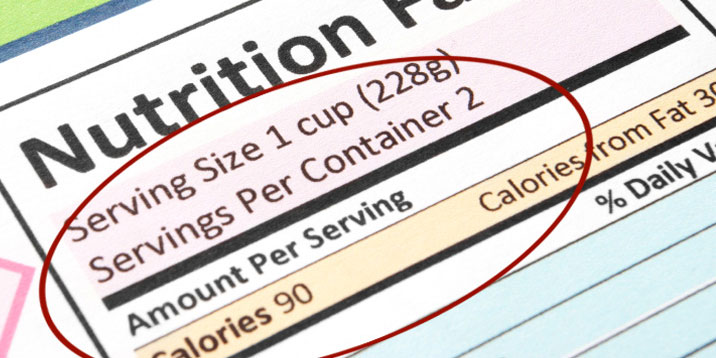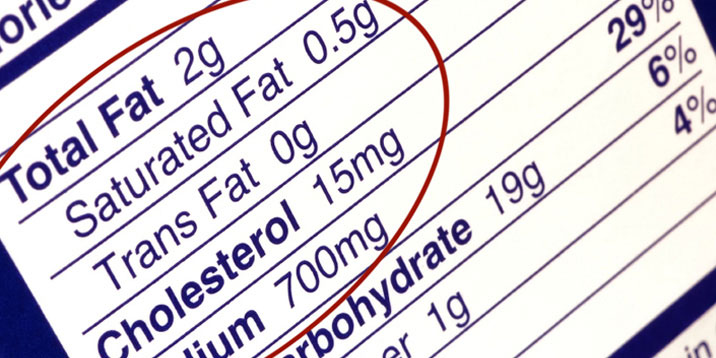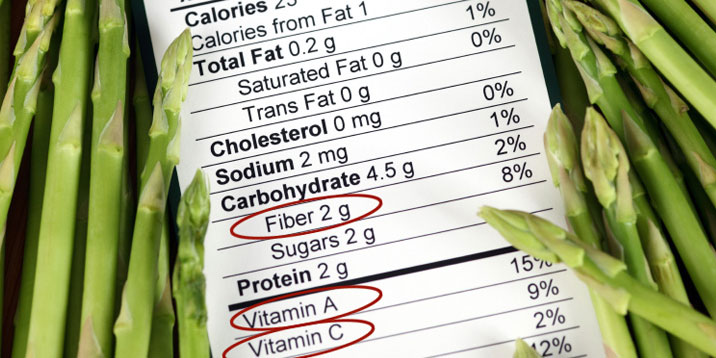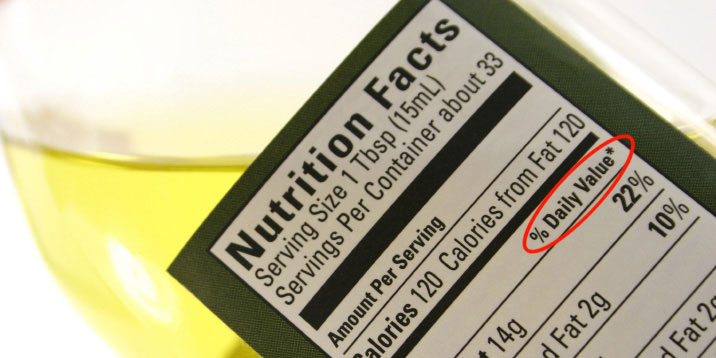
When it comes to packaged food, it’s always wise to read the nutrition label. But do you know what you should be looking for? It’s helpful to have a basic understanding of nutrition labels so that you can pay attention to what’s in your food, especially when it comes to sugars, sodium, cholesterol, trans fats, and saturated fats. If you become a savvy label reader, you’ll also be able to identify the types of foods that have sneaky hidden ingredients, such as cereals with added sugar and canned products with added sodium.
The Basics: Which Foods Have Labels?
The Food and Drug Administration (FDA) has strict requirements about the information that food manufacturers need to provide on nutrition labels. The agency requires food labeling for nearly all types of prepared foods, including canned and frozen foods, breads and cereals, snacks and desserts, and beverages. Nutrition labeling is not required for fruits, vegetables, or fish—it is voluntary. To find nutrition information on a food label, look on the package for a section called “Nutrition Facts.” Each label must contain details about serving size and number of servings per container, calories per serving and calories from fat, and a listing of the amount of nutrients in the food, along with the percentage of daily value in your diet.
Serving Size and Calorie Count
To make sense of a nutrition label, your first step is to check the top of the label for the serving size. Next, look directly below this information to find the number of calories per serving. Remember, people often indulge in more than one serving at a time. If you want to know how many calories you will consume at your meal, you must multiply the number of calories per serving by the number of servings you plan to eat.
Sound complicated? It’s simple once you try it. For example, let’s say you want to eat two pieces of toast for breakfast. The bread’s nutrition label may tell you that a serving size is “one slice,” with 160 calories per serving. Now, you need to multiply the number of calories per serving by the 2 servings you plan to eat. In this example, you would multiply 160 by 2, giving you 320 calories.
Nutrients to Limit
You’ll find a list of nutrients listed beneath the calorie information on food labels—but not all nutrients are created equal. According to the American Heart Association (AHA), you should try to limit the amount of fat, cholesterol, and sodium in your diet. For a 2,000-calorie diet, your daily total fat intake should not exceed 78 grams per day, which includes a maximum of 16 grams of saturated fat. It’s best to avoid trans fats altogether. When it comes to cholesterol, the AHA recommends limiting your intake to no more than 300 milligrams per day. Lastly, the AHA suggests consuming less than 1500 milligrams of sodium per day. Remember—these are just guidelines. Your doctor, dietitian, or other healthcare provider may have more specific dietary recommendations for you.
Nutrients to Seek
The AHA suggests that you make sure you get enough of certain key nutrients, including dietary fiber, vitamin A, calcium, thiamin, niacin, vitamin C, iron, and riboflavin. You should strive each day to reach 100 percent of the amount of vitamins, minerals, and fiber that your body needs. The FDA reports that most Americans don’t get enough of certain specific nutrients in their diets, including fiber, vitamins A and C, calcium, and iron. The agency notes that proper intake of these nutrients can decrease your risk of developing certain health conditions, such as osteoporosis and heart disease.
Are you getting enough of these key nutrients? Make sure you use the “Nutrition Facts” label to help ensure you are feeding your body all of the vitamins and minerals it needs.
Understanding Percent Daily Value
Opposite the list of nutrients on a food label, you’ll find the percent daily value for each nutrient. According to the FDA, the daily value section represents the amount of each nutrient in a serving compared to the total amount of the nutrient that a person should consume in a day (based on a 2000-calorie diet). For example, if one serving of a certain food contains 10 percent daily value of vitamin C, you will still need to eat other foods rich in vitamin C to make up the other 90 percent. Alternatively, if a serving contains 100 percent daily value of vitamin C, then that’s all the vitamin C you need for the day.
The AHA suggests using this section to help you reduce your consumption of sodium, saturated fat, and cholesterol by choosing foods that have 5 percent daily value or less. But if you want to consume more of a nutrient like fiber, then choose foods that contain 20 percent daily value or more.
Watching for Hidden Sugar, Fat, and Sodium
Some foods that may appear to be otherwise healthy may actually contain a significant amount of sugar, sodium, or fats—including trans fats. Don’t be fooled by packaging that lists other health benefits of a food. Always check the label for the hidden ingredients it may contain.
Many foods contain hidden sugars that you wouldn’t expect, including cereal, tomato sauce, and bread. Keep in mind that sugars do not have a percent of daily value on food labels. According to the FDA, this is because health experts could not provide a reference value or any other information that the agency believes would be sufficient to establish a percentage.
Food that may contain trans fats include doughnuts, pastries, cakes, cookies, pizza crust, French fries, certain stick margarines and shortenings, and any food that is fried. The AHA advises people to avoid foods with any amount of trans fats.
Conclusion
While reading food nutrition labels takes some practice, learning how to understand them can help you make smarter, more nutritious choices about your diet. According to the Mayo Clinic, it’s especially important to pay attention to food labels if you have certain health conditions, like high cholesterol or high blood pressure, that require you to follow a special diet. Use the nutrition data on food labels to help you compare foods for health benefits, and to avoid foods with too many hidden unhealthy ingredients, like excess sodium, fat, or sugar. With time and practice, you’ll find that nutrition labels can be an important tool to help you plan a healthy, nutritious diet for your whole family.
